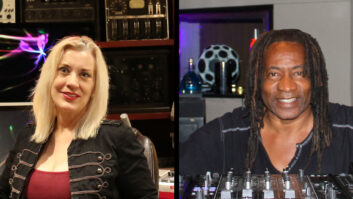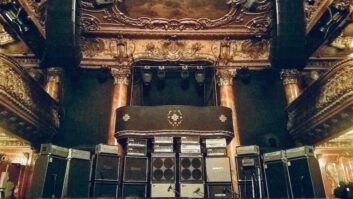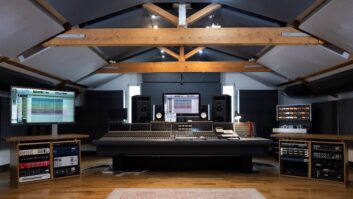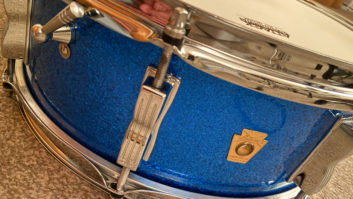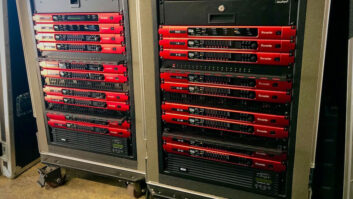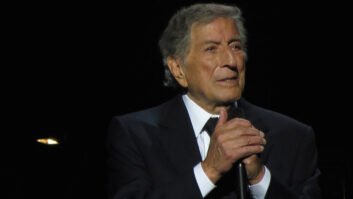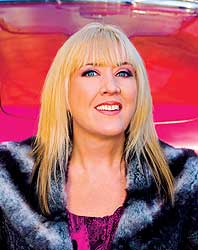
Ed Heath’s airplane fell apart in mid-air, killing him as it disintegrated. It was 1931, and Heath had been riding on the wings of the American industrial revolution with his line of build-your-own airplanes. His death could have been the end of our story right there, but instead it was a new beginning for American ingenuity. So what the heck does a failed prop plane from the 1930s have in common with a modern, modular analog synthesizer? In this case, they were both built from do-it-yourself kits.
It was soon after the Wright Brothers first got off the ground that Edward Bayard Heath started his company, tapping into Americans’ need to do their own thing. Early airplanes were expensive, but you could build your own from Heath’s kit for around $500, and it was (reportedly) a pretty nice one at that! After Heath’s death, the “Heathkit” company continued, becoming a successful manufacturer of more “grounded” build-it-yourself gadgets. In the 1950s, the company had great success offering oscilloscope kits for a fraction of what a prebuilt ’scope cost at the time, and with a flood of WWII surplus electronic parts on the market, Heathkit concentrated on offering budget-minded electronic kits to consumers. Each kit came with a detailed manual and color-coded parts. You did not need formal training to make a Heathkit—just a few simple tools.

A stack of PAiA 4700 synthesizer modules, wired up and ready to go
photo: Courtesy ThePlexus.com
STEVE JOBS’ FIRST WORKBENCH
In 1995, Steve Jobs, co-founder/CEO of Apple, described how Heathkit projects inspired him in his early years in an interview with Daniel Morrow for the Smithsonian Institute: “…It gave one an understanding of what was inside a finished product and how it worked because it would include a theory of operation, but maybe even more importantly, it gave one the sense that one could build the things that one saw around oneself in the universe. These things were not mysteries anymore. I mean, you looked at a television set, and you would think, ‘I haven’t built one of those but I could. There’s one of those in the Heathkit catalog and I’ve built two other Heathkits, so I could build that.’ Things became much more clear that they were the results of human creation, not these magical things that just appeared in one’s environment that one had no knowledge of their interiors. It gave a tremendous level of self-confidence.”

The Eico kit open-reel recorder responsible for my own career direction. Also on the shelf: Eico oscilloscope, Dynakit ST-70, PAiA vocoder and various bits and robots all made from kits.
High fidelity exploded in the early ’60s with the onset of the stereo revolution, and the kit companies were there to fill the void in quality stereo consumer electronics. Audiophiles complained that they could not enjoy their new stereo vinyl with the large wooden console units of the era, so enthusiasts turned to kit-building to create their sometimes outrageous stereo component systems. In addition to the Heathkit company, several other kit manufacturers thrived during the ’60s, including Eico, Dynaco, Fisher, HH Scott and glorious McIntosh. Similar to Heathkit, Eico was a company that used surplus WWII electronic components in its kits.
But then, as transistors replaced tubes, Japanese companies crushed the American companies in the consumer electronics market. They could build them faster, cheaper and better. It was no longer economical to do it yourself. In fact, in many cases it cost more to make a radio from a kit than it cost to buy a Japanese-made model off the shelf. So in the ’70s, the kit-building focus shifted to the new frontier: analog synthesizers.

Here’s what a simple PAiA VCO kit includes. Not that big a deal, huh?
Photo: Courtesy PAiA.com
TODAY’S NEW KIT-MASTERS
On the forefront of the synthesizer revolution was John Simonton of PAiA Corporation, whose company still offers several kits for the musician and engineer, including the 9700s analog synth module and the Fatman. If you love analog synths, you’ll want to get a stack of these fun and useful devices for gritty low-end tone and audio processing through their envelope filters. PAiA also offers new build-your-own spring reverbs, flangers, vocoders, guitar effects and even stereo mics. The PAiA users group in the ’70s also started Polyphony magazine, which eventually became Electronic Musician, a sister publication to Mix since 1985.
I have to give a great deal of credit to the kit-makers for my own career direction. My father built an Eico open-reel tape deck from a kit in the early ’60s, and when I was 4 years old, he sat me in front of it with a microphone. He monitored the recording off of the playback head, creating an amazing delay sound, which I remember to this day. I sat there for hours babbling into that microphone, listening to my voice echoing. It changed me. That old Eico tape machine is the reason I am engineering today.
Our minds can be inspired by the act of putting together a simple electronic kit. It’s an American tradition: Sweating over a workbench in a garage, then daring to take that plane for a ride. Or at the very least, the electronic kit helps us to understand how things work, which then inspires us to ask the question: “How can I build it better?”
Sylvia Massy is the unconventional producer and engineer of artists including Tool, System of a Down, Johnny Cash, Red Hot Chili Peppers, Tom Petty and Prince. She is a member of the NARAS P&E Wing Steering Committee and Advisory Boards, and is a resident producer at RadioStar Studios in Weed, Calif.

